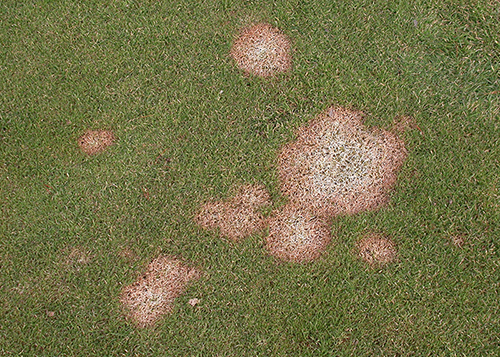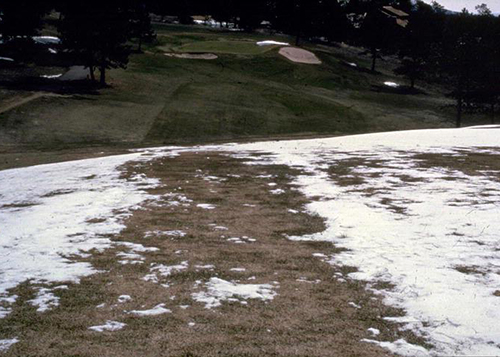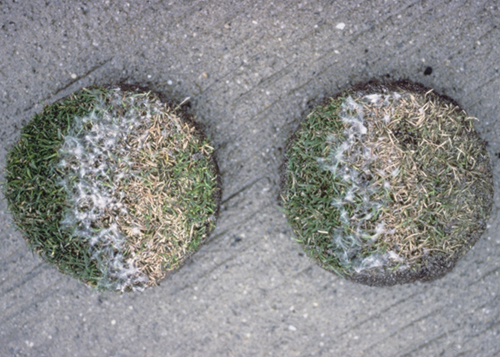Integrated Pest Management
Pink Snow Mold
Microdochium nivale
Hosts, Symptoms & Signs
- affects all grass species
- white to gray mycelium is sometimes visible (disappears after desiccation)
- exposure to light leads to spore production
- spores look pink in masses and give the disease its name
Disease Cycle
- circular patches develop with long periods of cool, wet weather regardless of snow cover
- initial spot size less than 2 inches wide, but can enlarge indefinitely
IPM Recommendations
- Avoid heavy nitrogen fertilizer in fall to avoid fast growth of grass before snowfall. Fertilizer should be applied a few weeks prior to dormancy to stimulate root growth.
- Mow until late fall to avoid snow falling on tall grass and weighing it down.
- Avoid compaction of snow by skis etc., and large snow drifts.
- Apply a fungicide (azoxystrobin; iprodione; propiconazole) as a preventative in fall; these fungicides are not useful as a curative.
For more information, see our Snow Mold on Turfgrass fact sheet.




